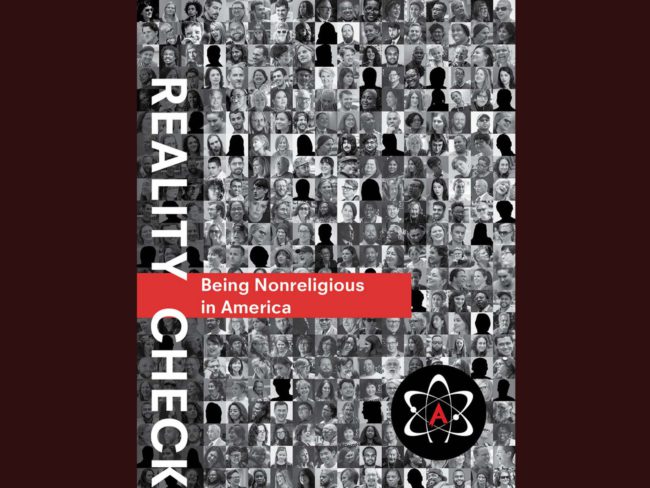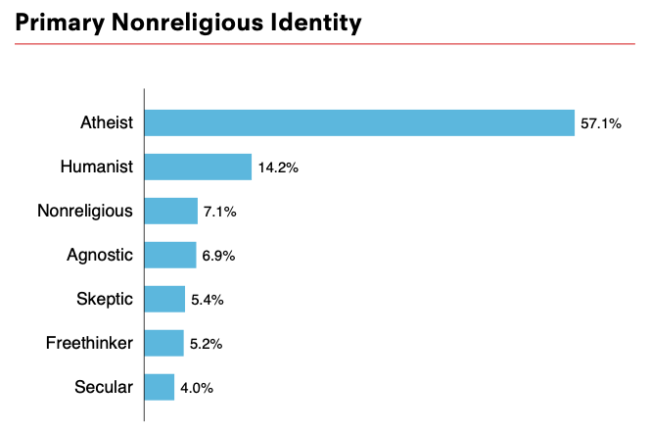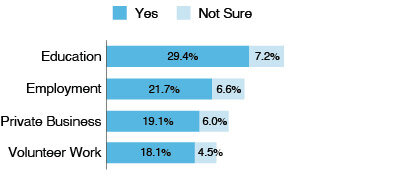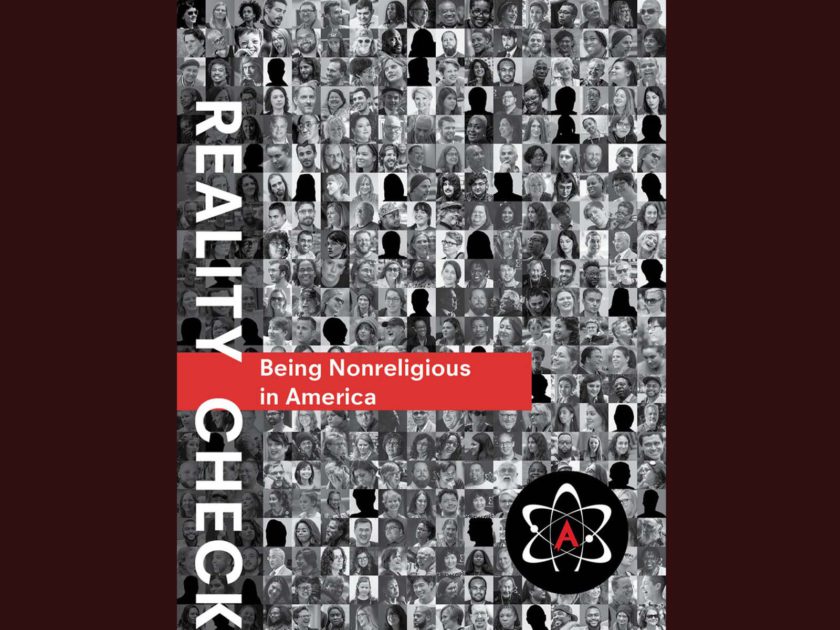
A new deeply comprehensive survey by American Atheists has been published.
Within the 62 pages of details you will find many insights, too many to detail here. Perhaps the best I can do is to simply highlight a few things from the exec summary.
Where can I find it?
- You can find the full survey here. It was released on 5th May and is titled Reality Check: Being Nonreligious in America. (That link will take you to the online copy, you can also download the full report via this link)
- The report was created by American Atheists – their website is here.
- Who? – They are a national civil rights group that represents the interests of atheists and nonreligious people in the United States
- They do of course have a press release for this survey. In fact, multiple press releases are available, including a general press release; releases about Latino, Black, and LGBTQ nonbelievers; and releases about Arizona, Arkansas, California, Massachusetts, Mississippi, New Jersey, Texas, and Utah.
Some Numbers
There are 75 million religiously unaffiliated people in the US. That is a larger demographic than “Catholic” or “Evangelical”.
The number of non-religious people involved in this survey was 34,000
Due to their nonreligious identity, more than half of the participants (54.5%) have had negative experiences with family members, nearly one third (29.4%) in education, and more than one in five (21.7%) in the workplace. Of those who experienced discrimination within their families, there was a 73.3% higher rate of likely depression.
The nearly one third of participants (29.8%) living in “very religious” communities were nearly two and a half times more likely to experience discrimination in education, two and a half times more likely in public services (voting, jury duty, poll work), more than three times more likely in employent, and more than two times more likely when dealing with private businesses, compared to those living in “not at all religious” communities.
Identity
Those that participated often use a variety of different words to identify themselves. The breakdown was as follows …

While more than half (57.1%) of participants most strongly identified as atheists, the vast majority of participants (94.8%) identified as atheists to at least some extent. The second most prevalent primary identity was humanists (14.2%), and significantly fewer participants primarily identified with other labels.
Interestingly enough, their backgrounds were quite diverse. One in seven (14.3%) participants were raised in a nonreligious household and about the same number (14.3%) had very strict religious expectations growing up.
Keeping their identity a secret
The survey found that nonreligious people frequently conceal their nonreligious identities and beliefs in various contexts, particularly when they are likely to face stigmatization or discrimination.
- Nearly one third (31.4%) of participants mostly or always concealed their nonreligious identity from members of their immediate family.
- Participants mostly or always concealed their nonreligious identity among people …
- at work (44.3%)
- at school (42.8%)
Rejection
Tragically, they found that participants faced a high level of family rejection as a result of their nonreligious identity.
Among participants under age 25 …
- one in five (21.9%) reported that their parents are not aware of their nonreligious beliefs
- for those whose parents are aware of their nonreligious identities, nearly one third (29.2%) have parents that are somewhat or very unsupportive of their beliefs.
The survey reveals that family rejection had a significant negative impact on participants’ educational and psychological outcomes.
Discrimination
They also found that nonreligious people routinely face discrimination and stigma because of their nonreligious identity. Nearly one third (29.4%) of participants had negative experiences in education due to their nonreligious identity, and one in five (21.7%) had negative experiences at work.

A few Thoughts and Observations on US Atheists
There is a great deal more to digest within this report, but there is one rather interesting and very fundamental observation.
What the report brings to the table is an insight, not just to the lives of those whose “crime” is that they simply don’t believe religious claims. It also throws a spotlight upon many of those around them who are religious. The devout often claim to be the people who hold the high moral ground, yet the daily reality is that many of them are utterly intolerant of people who have different beliefs or no belief. They might indeed sincerely believe they are representing God, but the way it all pans out is that they end up being totally obnoxious and very toxic.
In other words, this is not just a report about the nonreligious, it is also very much a report that is the handwriting on the wall for the religious. (Bonus points if you know the “handwriting on the wall” reference and understand the symbology without clicking the link to Wikipedia)
(Side note: for anybody concerned about my use of religious symbology, it is worth remembering that the text is part of the wider Western intellectual and artistic heritage. I can happily read old texts without any need to think they are literally true. The vast majority of subject matter experts deem it to be legendary and not historically factual).
